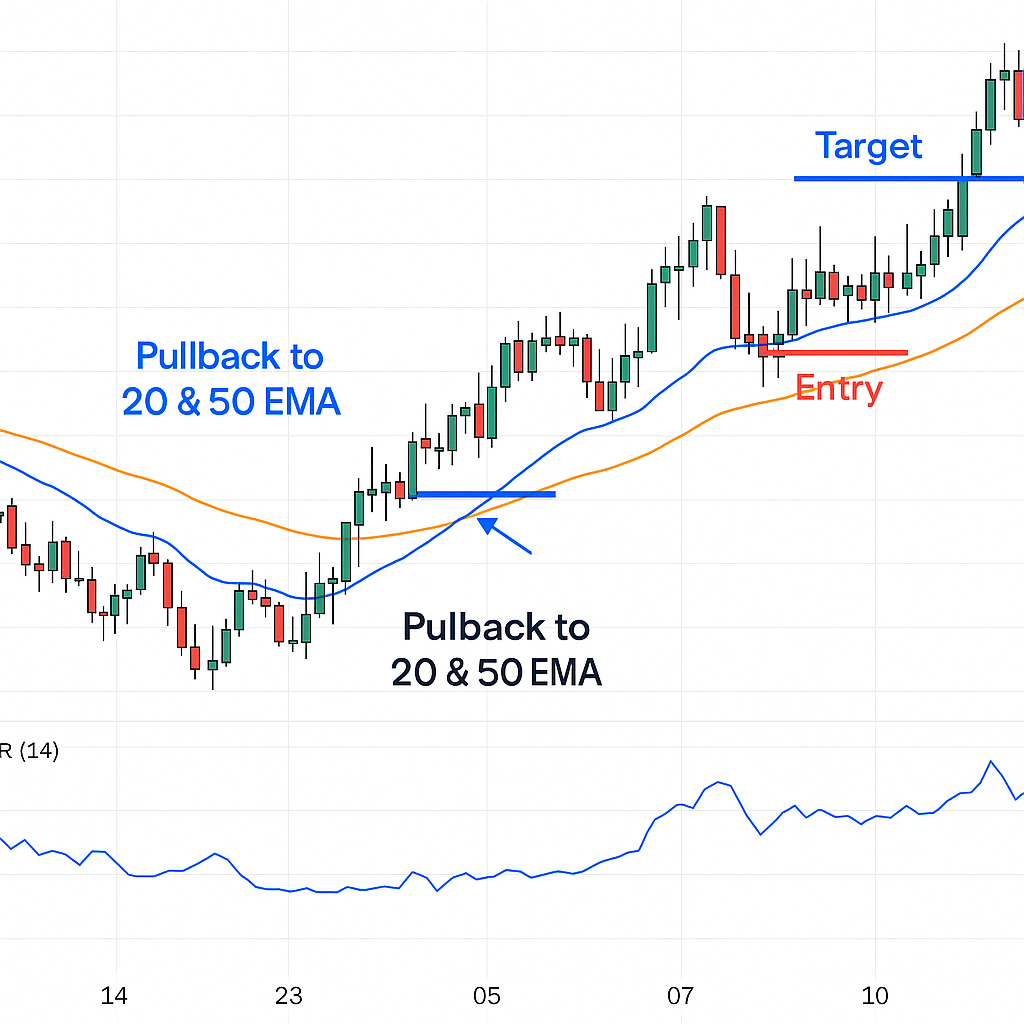Trend entry techniques
- Identify a clear horizontal resistance or support zone
- Wait for a candle to close beyond the level (not just a wick)
- Enter on the next candle or slight pullback
- EUR/USD breaks above recent swing high at 1.1000
- Price closes at 1.1015
- You enter long on the next candle with stop below the breakout level
⚠️ Caution: Breakouts can be prone to fakeouts, especially in low-volatility sessions or news-driven spikes.
- Identify a trending market using 20 EMA or 50 EMA
- Wait for price to pull back into the EMA zone (e.g. between 20 and 50 EMA)
- Look for reversal candle patterns (pin bars, engulfing) or a continuation breakout
- USD/JPY in uptrend, riding above 20 EMA
- Price dips into 20 EMA and forms a bullish pin bar
- You enter long on the next candle, stop below the pin bar
📌 Many trend traders only trade pullbacks to reduce chasing price.
- ✅ Higher-timeframe alignment: Check if the 4H and 1H trends agree
- ✅ MACD momentum: Is it crossing in the direction of your trade?
- ✅ ADX strength: Is it above 20–25, confirming an active trend?
📌 Only take trades when the majority of signals align. Avoid random entries.
- You identify an uptrend using 20/50 EMA
- Price pulls back to the 20 EMA
- You see a bullish engulfing candle
- MACD is turning up and ADX is above 25

